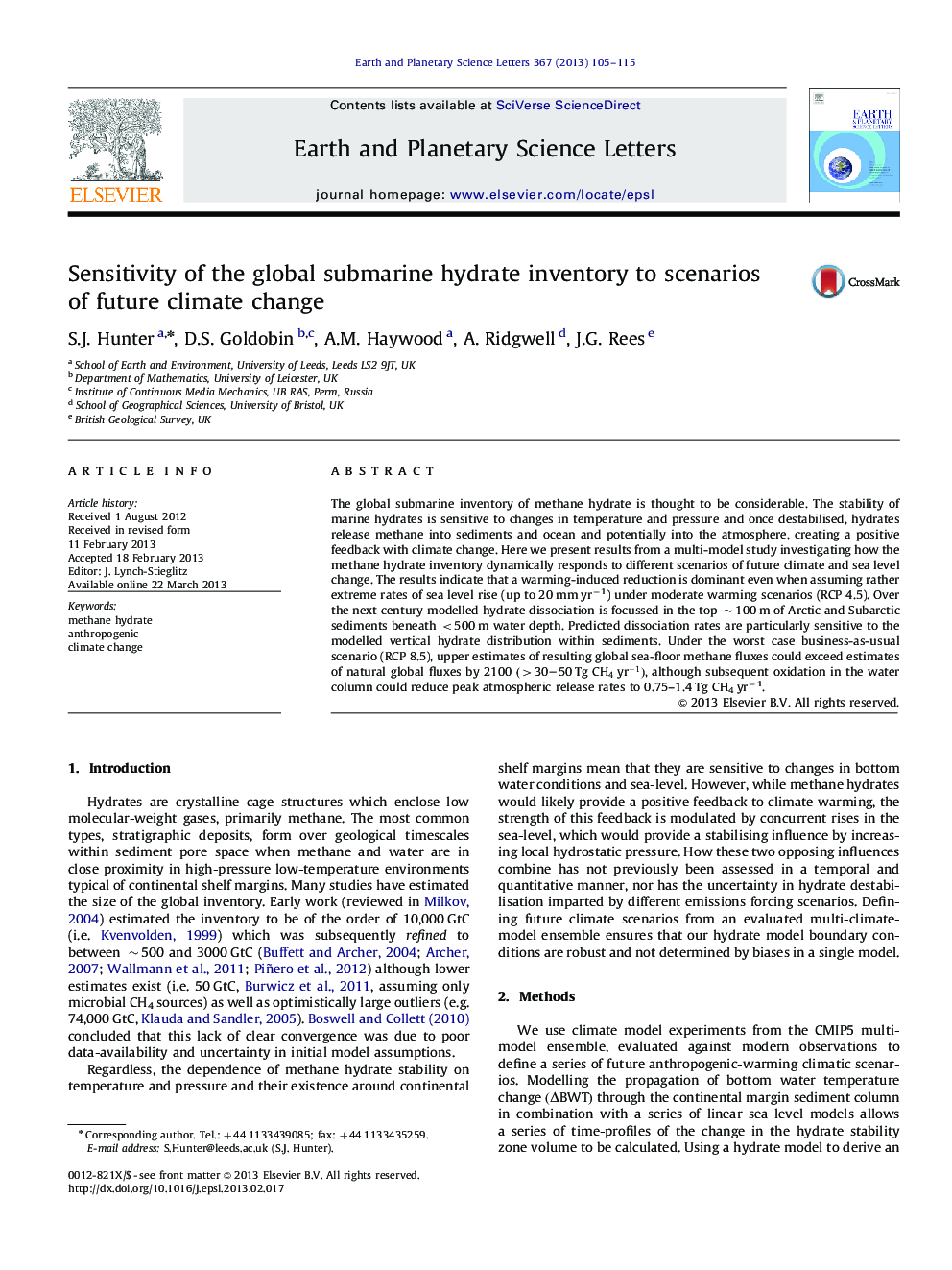| Article ID | Journal | Published Year | Pages | File Type |
|---|---|---|---|---|
| 6430272 | Earth and Planetary Science Letters | 2013 | 11 Pages |
The global submarine inventory of methane hydrate is thought to be considerable. The stability of marine hydrates is sensitive to changes in temperature and pressure and once destabilised, hydrates release methane into sediments and ocean and potentially into the atmosphere, creating a positive feedback with climate change. Here we present results from a multi-model study investigating how the methane hydrate inventory dynamically responds to different scenarios of future climate and sea level change. The results indicate that a warming-induced reduction is dominant even when assuming rather extreme rates of sea level rise (up to 20 mm yrâ1) under moderate warming scenarios (RCP 4.5). Over the next century modelled hydrate dissociation is focussed in the top â¼100m of Arctic and Subarctic sediments beneath <500m water depth. Predicted dissociation rates are particularly sensitive to the modelled vertical hydrate distribution within sediments. Under the worst case business-as-usual scenario (RCP 8.5), upper estimates of resulting global sea-floor methane fluxes could exceed estimates of natural global fluxes by 2100 (>30-50TgCH4yrâ1), although subsequent oxidation in the water column could reduce peak atmospheric release rates to 0.75-1.4 Tg CH4 yrâ1.
⺠We use evaluated climate change scenarios from the CMIP5 multi-model ensemble. ⺠We model the response of the hydrate inventory to ocean warming and sea level rise. ⺠Dissociation focussed in top 100 m of Arctic sediments below <500m water. ⺠Modelled dissociation sensitive to vertical distribution of hydrate in sediment. ⺠Sea-floor CH4 flux exceeds natural flux, atmospheric flux relatively insignificant.
